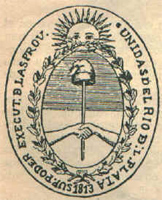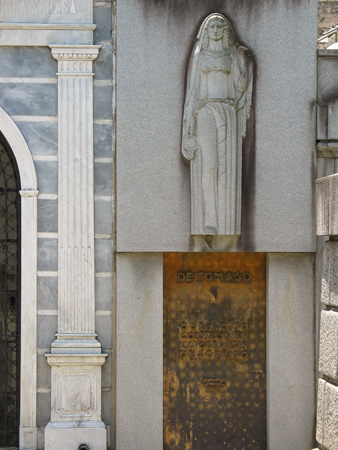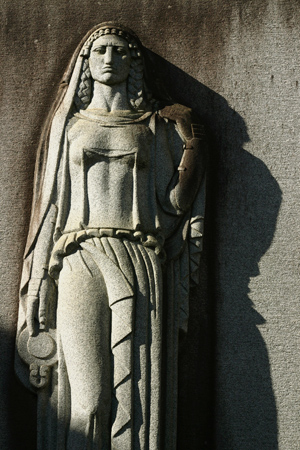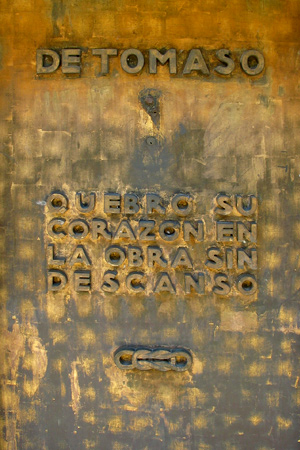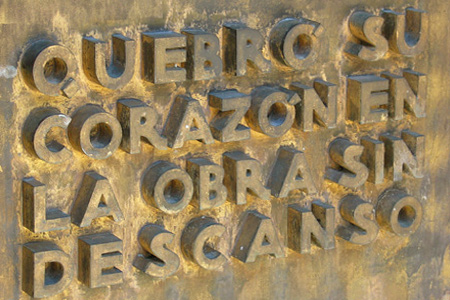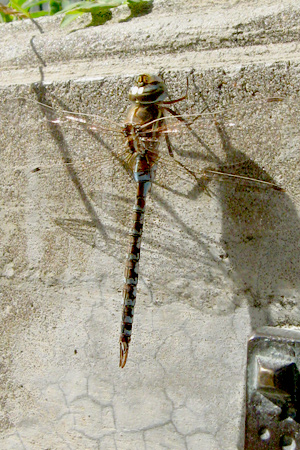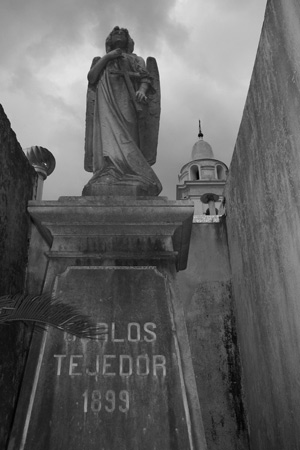By early 2006, my general map was complete. But the entire project was put on hold since my walking tours were booming. It became impossible to juggle everything. Also, as I did more tours of downtown Buenos Aires, it seemed that a guidebook to that area was more important so I shifted focus to that.
At the same time, the Friends’ Association of Recoleta Cemetery (ADACRE) began publishing a map & selling it at the front gate for 4 pesos [Update: 2009 price is 6 pesos, 2011 price is 8 pesos]. Proceeds went to fund recent restoration work not done by any national or city organization in decades. Good for them. Although much better than previous maps, even their effort needed some improvement:
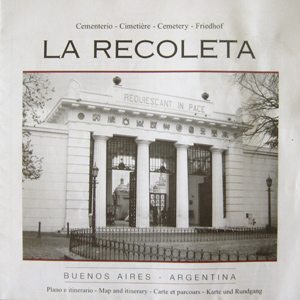
Both the foldable square format & the price were right. And 159 tombs were listed… many more than the 89 from the previous map. The interior contained a few black & white photos with a brief historical summary in Spanish, French, English & German. So far, so good.
But in an effort to be more inclusive, the design suffered. Due to space constraints, the only text that could accompany each name was a single word: President, poet, writer, politician. Most people outside Latin America have probably never heard of these people before, & a one-word biography seems worse than nothing at all. Finally, the list of personalities is not in alphabetical order & is not practical if you want to look for someone in particular:
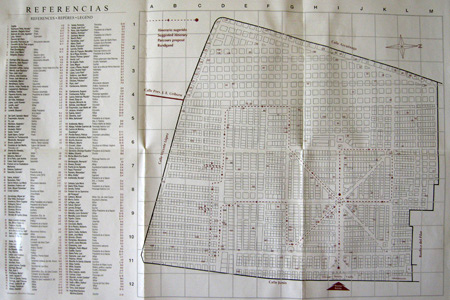
But the biggest problem was the actual map itself. It looks like someone took the hand-drawn map pictured in Part 1 of this series, scanned it, & used it without editing anything. Lines are crooked & the tomb divisions are incorrect. The numbers used are placed haphazardly… no order at all. In the photo below, the entrance is shown with a huge range of numbers (#1, #42, #71 & #146). For easy use, the map should be arranged numerically or alphabetically, but this was neither:
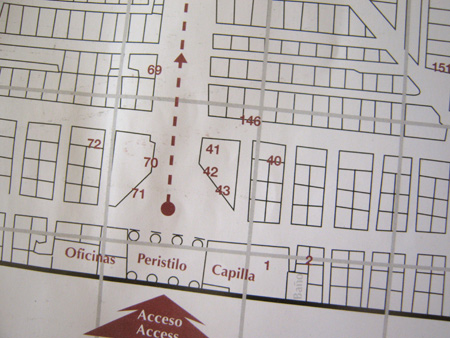
The ADACRE map was by far the best yet, but apparently the graphic designer has little experience.
Read the complete story in the following posts titled “map development”: Part 1, Part 2, Part 3, Part 5, Part 6 & Part 7. Good news! The PDF guidebook is now available.
2 Comments